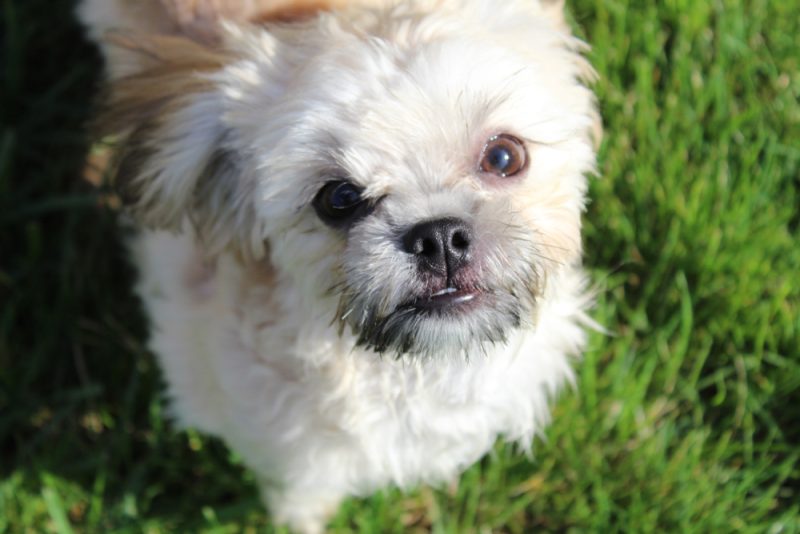You’re out on a nice leisurely afternoon walk, and the next thing you know, your dog is straining the leash, trying to take off after a squirrel that just crossed in front of you on the sidewalk. You pull your dog back just in time to save the squirrel, but you know it will happen again.
Have you ever wondered why your dog chases squirrels and other small creatures, such as porcupines, raccoons, opossums, and skunks? We’ll explain the instinct behind this behavior and give you a few tips for training your dog not to chase the furry little creatures in the article below.

The 2 Reasons Your Dog Chases Squirrels
There are a few reasons that your dog might be chasing squirrels and other small animals. We’ll go into a few of those possible reasons in the sections below.
1. Your Dog Is Curious or Wants to Play
Dogs are curious and constantly want to play, especially when they’re young. A young puppy will chase a squirrel to see if it wants to play with them. While this is adorable, and you certainly want to encourage your puppy to play, it’s best to keep them away from squirrels because you don’t want your dog to get bitten or injured in some way.
2. It’s the Dog’s Natural Instinct to Chase
Dogs naturally want to chase smaller creatures. It’s a predatory instinct they inherited from their ancestors. Hunting smaller animals is how wolves and wild dogs survive, but some domestic breeds have a stronger prey drive than others. Dogs with a working and hunting lineage are likelier to take off after a squirrel than dogs bred solely for companionship. However, even the beloved Poodle will chase a squirrel if they’re motivated enough.


Which Dogs Have the Highest Prey Drive?
There are plenty of dogs that seem uninterested in chasing wild animals. However, some dogs have a very high prey drive, usually because they were bred to protect or hunt. We’ve listed the dogs with the highest predatory drive below; however, any dog breed or individual dog may have a strong instinct to hunt.
Sporting Group
Hound Group
Terrier Group
Herding Group
Working Group

Can You Train Your Dog Not to Chase Squirrels?
You can train your dog not to chase squirrels, but it is an instinct that is ingrained in your furry friend, which means it can be challenging and requires lots of patience, dedication, and positive enrichment. Plus, this is continuous work for the rest of your dog’s life.
However, leash training will keep your dog safe when you’re out for a walk. Until your pup learns to resist the urge to run after a squirrel in your yard, monitoring them closely and keeping them on a leash is best. You can also enroll them in obedience and recall classes to reduce their chasing tendencies or consult a veterinarian about training methods.
If you need to speak with a vet but can't get to one, head over to PangoVet. It's our online service where you can talk to a vet online and get the advice you need for your pet — all at an affordable price!


Tips for Keeping Your Chasing Dog Safe
Until you can effectively train and teach your dog not to chase squirrels, you must keep them safe when you’re out on walks, hiking trips, or even in your backyard.
1. Always Carry a Leash
If your dog has a mind of their own, it’s best to keep them on a short leash so that you can pull back when needed. It’s also a good idea to use a harness with the leash. The harness keeps the leash from tightening on your dog’s neck and back, which could cause injuries if you pull them too hard.

2. Block All the Exits and Remove Feeders
While it’s almost impossible to keep squirrels out of your yard, you can block the exits for your dog. Ensure there are no holes in your fence or places where the dog could quickly jump over and chase a squirrel on the other side or end up in the road.
If you have bird feeders in your yard, they’re undoubtedly attracting the squirrels along with the birds. Although birdwatching is a relaxing hobby you can enjoy from the comfort of your home, you can reduce the number of squirrels in your yard by removing the feeders.
3. Keep a Close Eye Out
It’s always best to stay outside with your pet if they like chasing squirrels. You can watch closely for squirrels in your yard and stop your dog from chasing them. Squirrels and other small creatures will scratch and bite if they feel cornered, and though your dog is just curious and wanting to play, the squirrel will see them as a threat and try to defend itself. However, these animals are very fast and agile, and your dog is unlikely to catch them unless they are injured or ill.
In addition to scratching or biting your dog, squirrels can also spread bacteria and parasites , like fleas and ticks, which, in turn, can harbor viruses, bacteria, and intestinal parasites. Luckily, it seems that small rodents like squirrels are almost never found to be infected with rabies, so this risk is quite low. Still, if your dog is very active outdoors, a rabies vaccination is important, as it will protect your pet from the disease. If your dog is bitten or scratched by a squirrel or other wild animal, take your dog to the veterinarian immediately.

Final Thoughts
Whether your dog enjoys chasing squirrels because it’s entertaining or instinctual, it’s not a habit you want to continue. Squirrels have sharp teeth and claws, and they can transmit diseases and parasites to your lovable pet. Some dogs aren’t fast enough to catch a squirrel, but several breeds were bred to hunt small animals, and they can skillfully chase and kill them.
While you can train your dog not to chase squirrels, be prepared to fully invest your time and patience, using positive reinforcement to achieve this goal. This may require ongoing investment on your side throughout your dog’s life, depending on the level of their prey drive. Consider signing up for training classes with a professional who can guide you in the best ways to effectively teach your dog impeccable recall, even in situations of encountering wildlife. Until that time, however, follow the tips above to keep your dog safe from harm.
Featured Image Credit: KellyNelson, Shutterstock


















